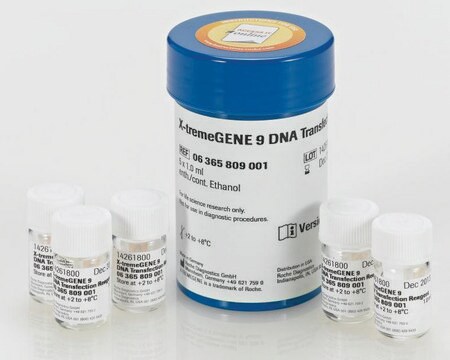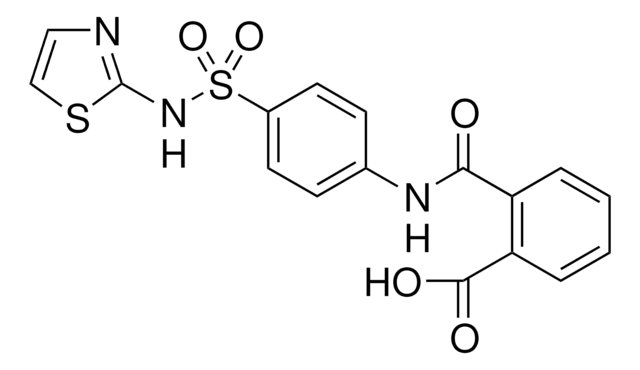推荐产品
一般說明
特點和優勢
- 简单易用的非脂质体试剂 无动物源性成分,室温稳定,经0.2 μm滤膜过滤,并且在有血清培养液中仍保持活性。
- 高转染效率 对于原代细胞和使用其它试剂难转染的肿瘤细胞系有高转染效率。
- 结果生理相关性好 使用细胞毒性低的试剂。
- 满足高通量实验 实现简单一致的靶标评估。
品質
外觀
其他說明
法律資訊
相關產品
訊號詞
Danger
危險聲明
危險分類
Eye Irrit. 2 - Flam. Liq. 2
儲存類別代碼
3 - Flammable liquids
水污染物質分類(WGK)
WGK 1
閃點(°F)
334.4 °F
閃點(°C)
168 °C
其他客户在看
商品
Automation is used for many applications to reduce variation caused by manual handling and to obtain reproducible results in high-throughput assays. High-throughput applications, such as knockdown studies or target screenings, often include cell transfection.
Small inhibitory RNAs (siRNAs) have become the focus of interest in many laboratories. For the first time, these molecules offer an easy way to knock down the expression of selected genes in mammalian cells without having to resort to classical gene knockout techniques.
Transfection is the introduction of DNA, RNA, or proteins into eukaryotic cells and is used in research to study and modulate gene expression. Thus, transfection techniques and protocols serve as an analytical tool that facilitates the characterization of genetic functions, protein synthesis, cell growth and development.
This brief webinar provides an overview of what transfection is and the methods that are used to introduce DNA or RNA into eukaryotic cells.
实验方案
Lentiviruses represent a powerful tool in research applications to transduce a wide range of cell types.
Transient co-transfection of plasmids is a method that is commonly employed for cellular protein-protein interaction studies, transcription factor studies, and gene knockdown studies using shRNA encoding plasmids.
Cell preparation for transfection Plate cells approx. 24 hours before transfection making sure cells are at optimal concentration (70 – 90 % confluency).
我们的科学家团队拥有各种研究领域经验,包括生命科学、材料科学、化学合成、色谱、分析及许多其他领域.
联系技术服务部门












